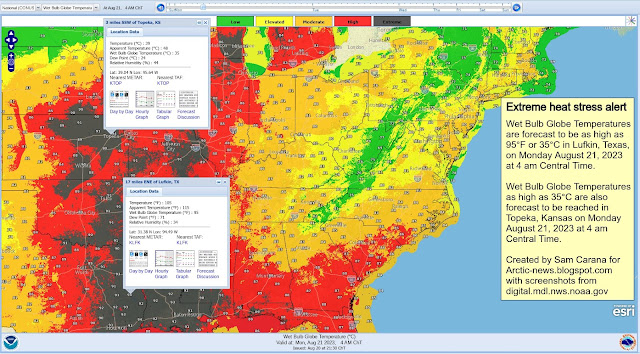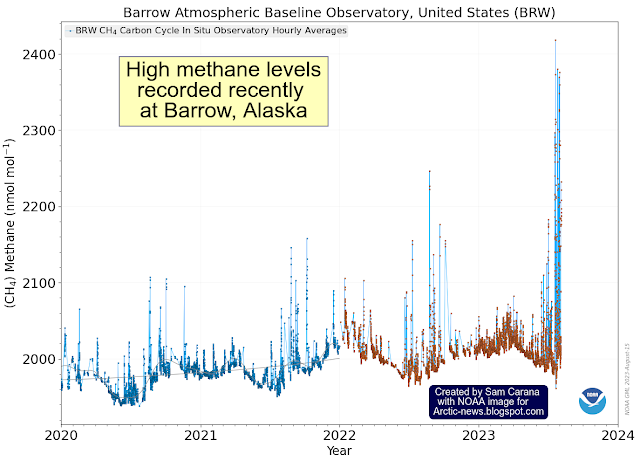.svg.png) |
| The Bulletin's Doomsday Clock |
by Andrew Glikson
Under the guise of lies and cover-ups, the global powers to be have set the stage for the unthinkable, a world-wide hair-trigger human suicide system taking much of nature with it. With the exception of abstract ideas or experimental attempts, no actual steps are being taken to slow down, or even reverse, the inexorable rise of atmospheric greenhouse gases, now rising into Miocene-like levels of >400 parts per million CO₂ within the century, the fastest rise rate identified in the geological record.
Nor are steps undertaken to try and dismantle the global doomsday fleet of more than 12,700 nuclear warheads, where space and the oceans have become nuclear playgrounds, enough to render large parts of the Earth uninhabitable.
The criminal insanity of political, military, strategic, economic and scientific leaders, matched only by the naive blindness of billions of people, is consistent with what has been referred to as the ‘Fermi Paradox’ ─ the apparent absence of signals from technological civilizations in the Milky Way, interpreted in terms of a self-destruction of such civilizations.
Even at this stage, the litany of denial and betrayal never stops. Political leaders who have vowed to adhere to the science, shift to promote the mining and export of fossil fuels, as if greenhouse gases do not disperse in the atmosphere world-wide, or they adopt nuclear weaponry, as soon as they reach power. A suicidal element in human nature?
While the multitudes are fixated on domestic issues and regional troubles, including genocidal conflicts and in corners of the world (Ukraine, Chechnya, Korea, Vietnam, Cambodia, Laos, Mein-Mar, Iraq, Syria, Afghanistan, Yemen, and other), the price of maintaining an Orwellian ‘peace and stability ’, including ethnic cleansing, drowning refugees, economic hardships, misanthropic violence, football games, the tour de France, tennis rackets, relatively few are concerned with the deadly games of empire. Even symbolic gestures toward original people, like the “Voice” are being objected to.
 |
| Arnold Böcklin, Self-portrait with Death playing the fiddle (1872) |
Where does responsibility lie? Where humans are caught up in the anthropogenic genome, not enough “good” angels exist. Where competition for food, shelter and reproduction are inherent, ethics, compassion and empathy may not be easy to find. Humanity may be more readily detected among small tribes than in large civilizations. A young child born in a bubble has few or no impressions impinging on its brain to respond to. By contrast children exposed to obscene violence and lies paraded on fluorescent screens are more likely to grow into distorted brain-washed multitudes.
 |
| Greta Thunberg |
Surprisingly, the only significant resistance to the genocidal behaviour of alpha male-dominated groups has arisen from the not-yet spoiled minds of children, led by the young Greta Thunberg.
A/Prof. Andrew Y Glikson
Earth and Paleo-climate scientist
Books:
The Asteroid Impact Connection of Planetary Evolution
https://www.springer.com/gp/book/9789400763272
The Archaean: Geological and Geochemical Windows into the Early Earth
https://www.springer.com/gp/book/9783319079073
The Plutocene: Blueprints for a Post-Anthropocene Greenhouse Earth
https://www.springer.com/gp/book/9783319572369
The Event Horizon: Homo Prometheus and the Climate Catastrophe
https://www.springer.com/gp/book/9783030547332
Climate, Fire and Human Evolution: The Deep Time Dimensions of the Anthropocene
https://www.springer.com/gp/book/9783319225111
Evolution of the Atmosphere, Fire and the Anthropocene Climate Event Horizon
https://www.springer.com/gp/book/9789400773318
From Stars to Brains: Milestones in the Planetary Evolution of Life and Intelligence
https://www.springer.com/us/book/9783030106027
Asteroids Impacts, Crustal Evolution and Related Mineral Systems with Special Reference to Australia
https://www.springer.com/us/book/9783319745442
The Fatal Species: From Warlike Primates to Planetary Mass Extinction
https://www.springer.com/gp/book/9783030754679
The Trials of Gaia. Milestones in the evolution of Earth with reference to the Antropocene
https://www.amazon.com.au/Trials-Gaia-Milestones-Evolution-Anthropocene/dp/3031237080






















